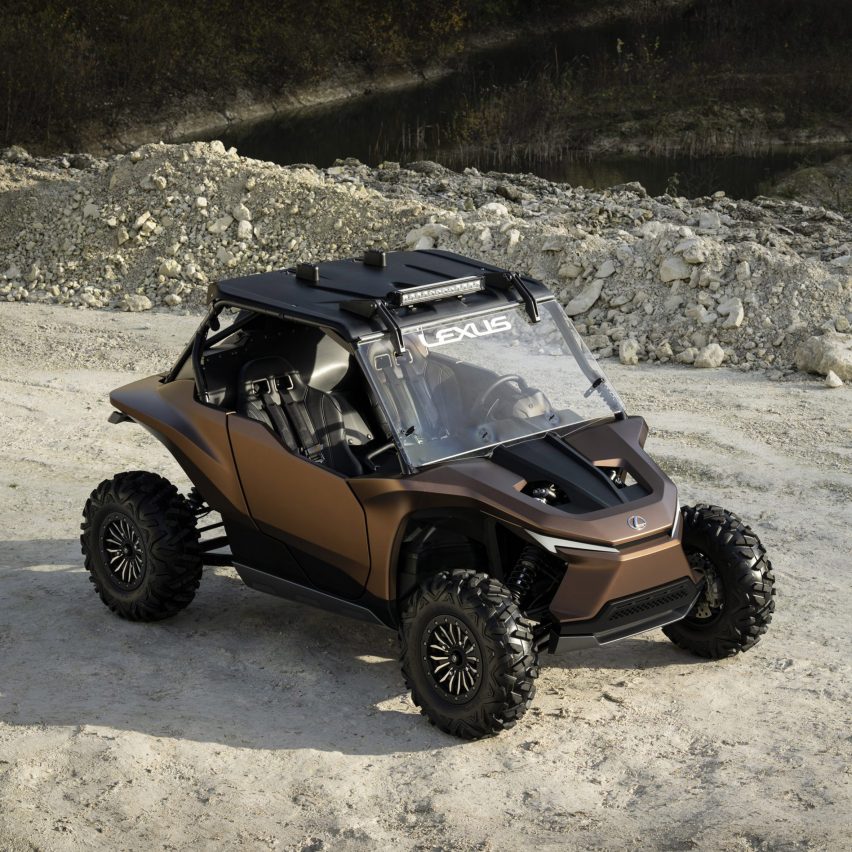
Japanese carmaker Lexus has developed a concept for a recreational off-highway vehicle with a combustion engine fueled by hydrogen instead of petrol.
The buggy has many of the hallmarks of a regular recreational off-highway vehicle (ROV), including exposed suspension and chunky tyres, but features Lexus' first hydrogen engine.
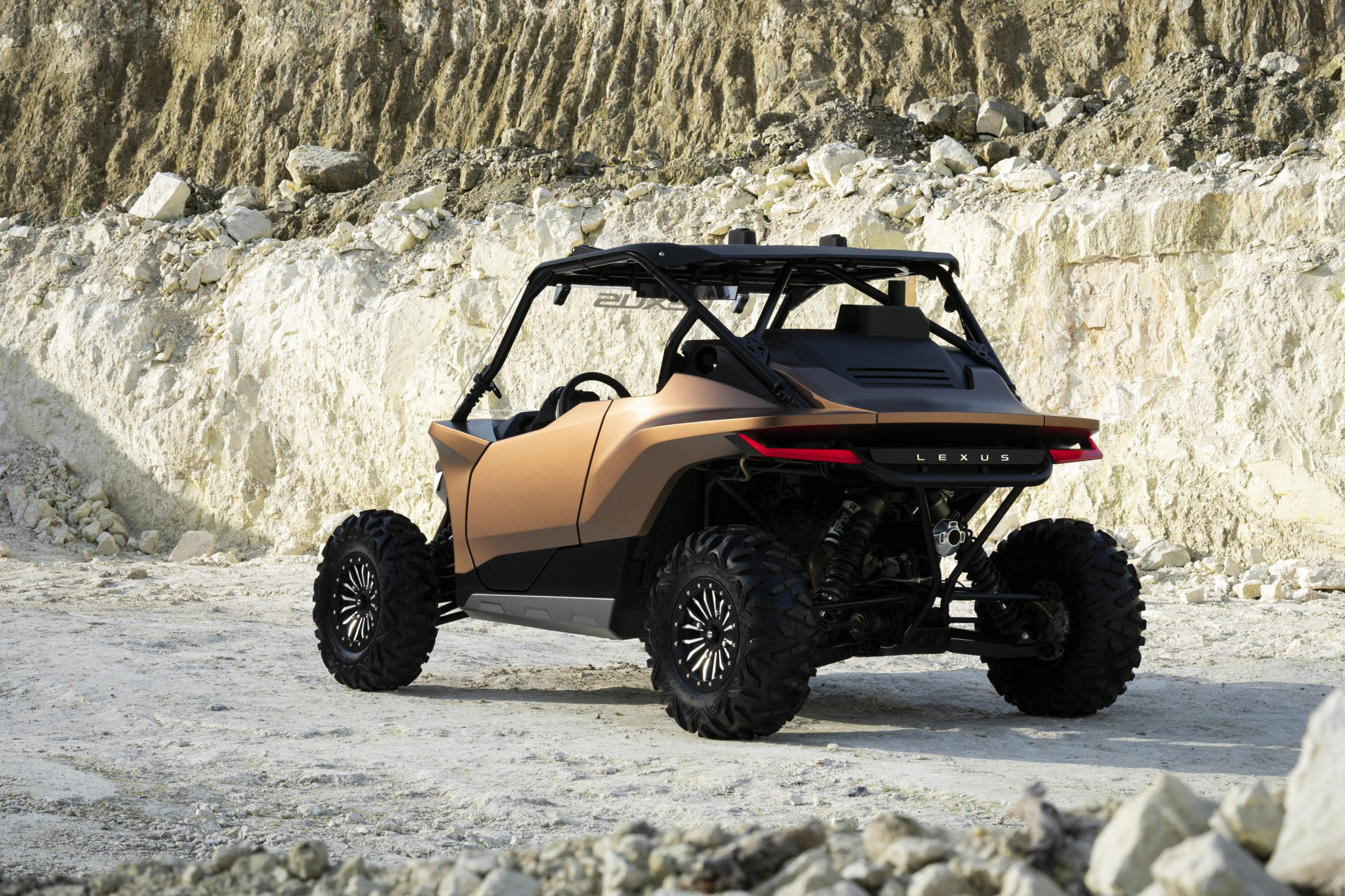
According to the brand, the ROV Concept generates "near-zero emissions" through its use of hydrogen as an alternative fuel.
This is stored in a high-pressure tank at the rear of the vehicle, which is shielded by a sleek black protective cage and a lightweight dark-bronze body.
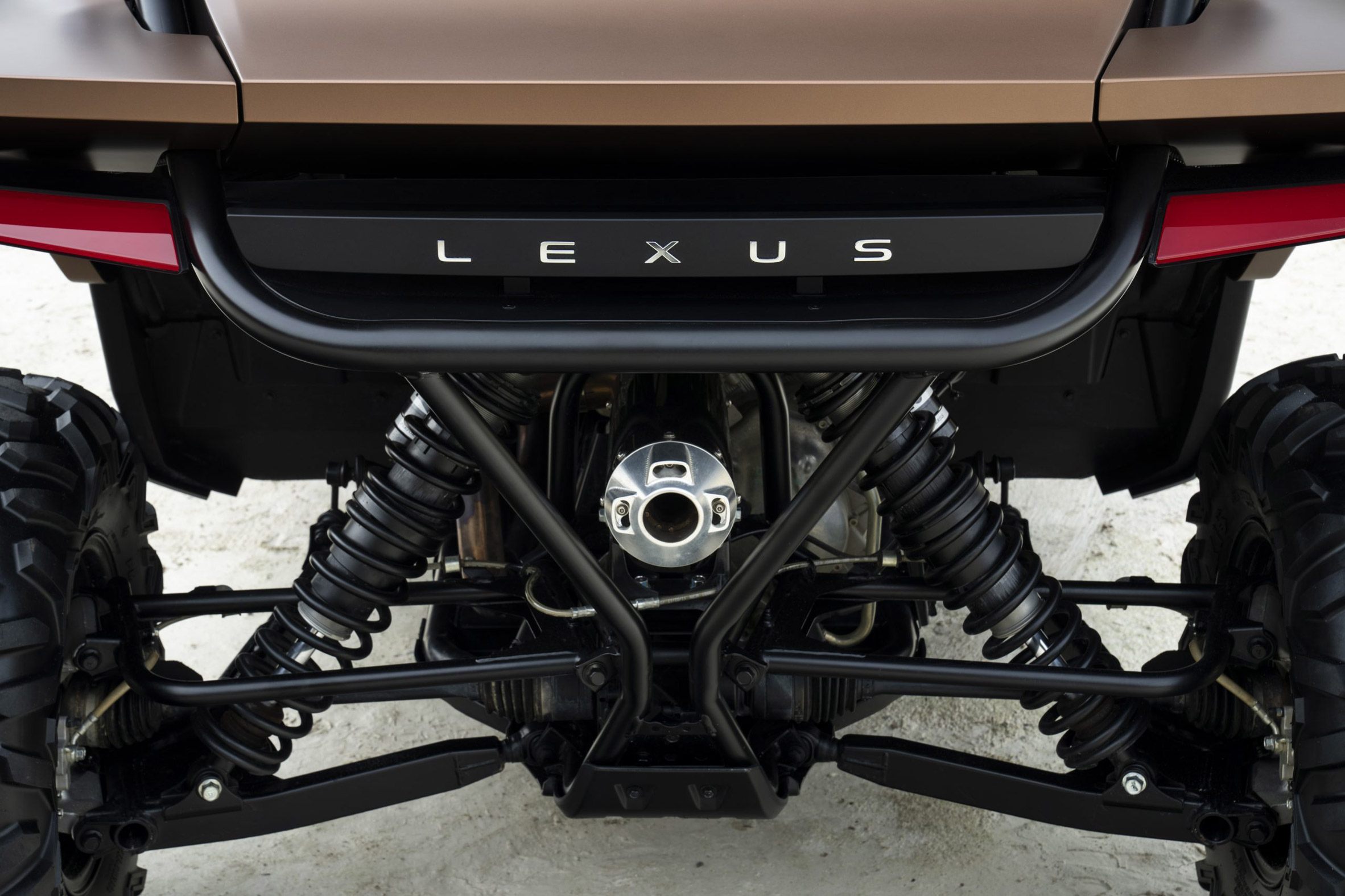
Unlike Lexus's LF-FC concept car from 2015, which is a fuel cell electric vehicle (FCEV) powered by hydrogen, the ROV Concept sees hydrogen injected straight into the combustion chamber of a one-litre engine, which works exactly like that of a traditional fossil-fuel vehicle.
In a bid to appeal to automotive purists, Lexus says this preserves the engine tone and immediate responsiveness that can be lost with a battery-powered vehicle.
"Importantly, the new hydrogen engine produces close to zero emissions, with only a negligible amount of engine oil burned during driving," Lexus said.

The brand has not announced when a similar hydrogen-powered motor might be integrated into its actual fleet.
Currently, two hydrogen fuel-cell vehicles from major carmakers are already on the market – the Hyundai Nexo and Toyota Mirai.
A number of other brands have similar cars in the pipeline, from Land Rover's Defender to the BMW iX5 Hydrogen.
However, most hydrogen produced today is derived from natural gas, a fossil fuel that is energy-intensive to refine and in the process emits "significant" amounts of CO2.
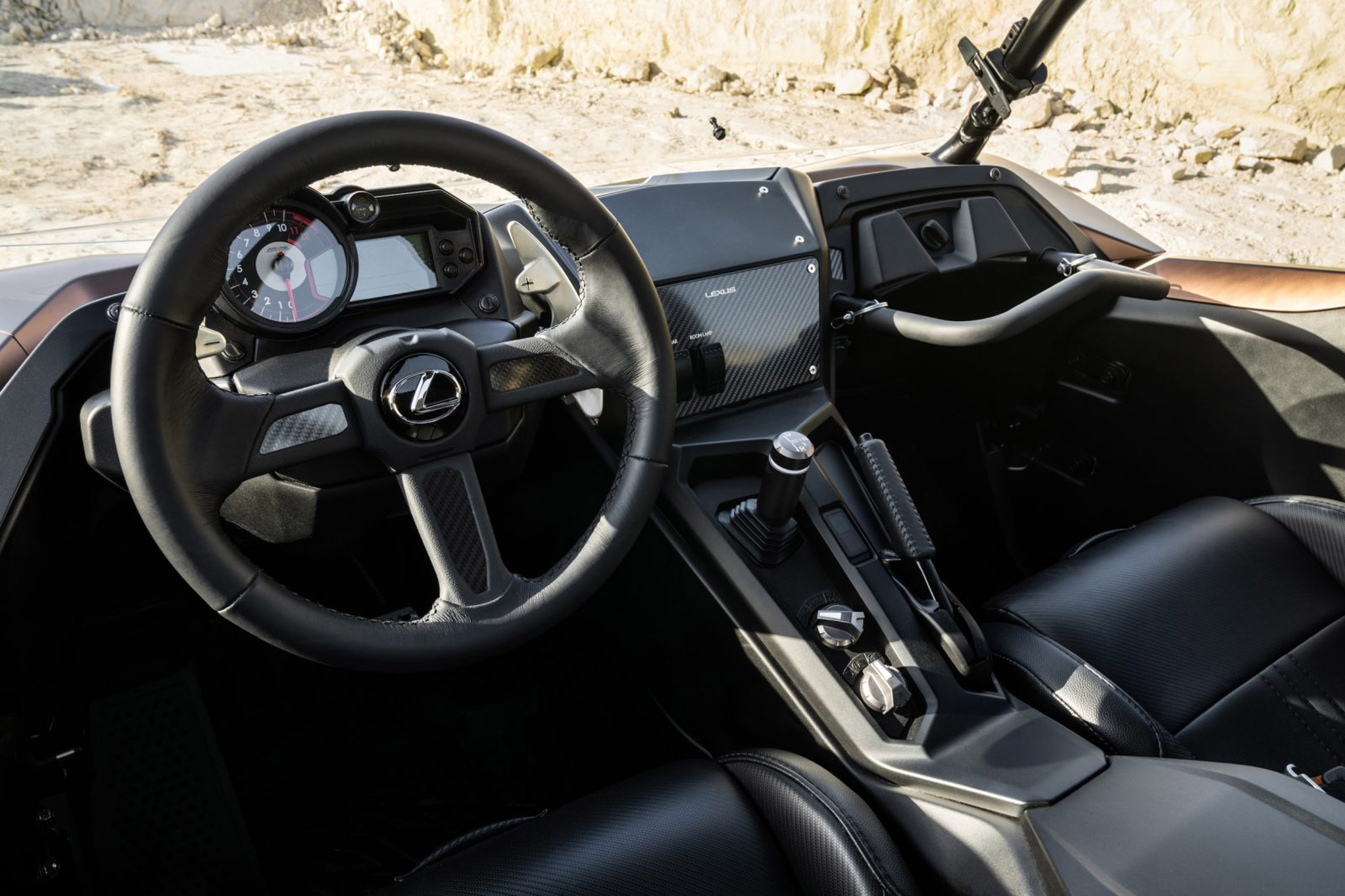
In the future, this carbon could be captured and stored underground, to create a product the natural gas industry is marketing as "blue hydrogen".
But a recent study found that while this reduces carbon emissions, the resulting hydrogen still has a 20 per cent greater greenhouse gas footprint than simply burning natural gas or coal for heat.
The only way to make hydrogen with zero emissions is using renewable energy to split water into hydrogen and oxygen in a process called electrolysis.
This so-called "green hydrogen" currently accounts for less than one per cent of global production and is hard to scale due to the vast amount of green energy required in the process.
Powering all of today's hydrogen production in this way would require more renewable energy than is produced by the European Union every year.
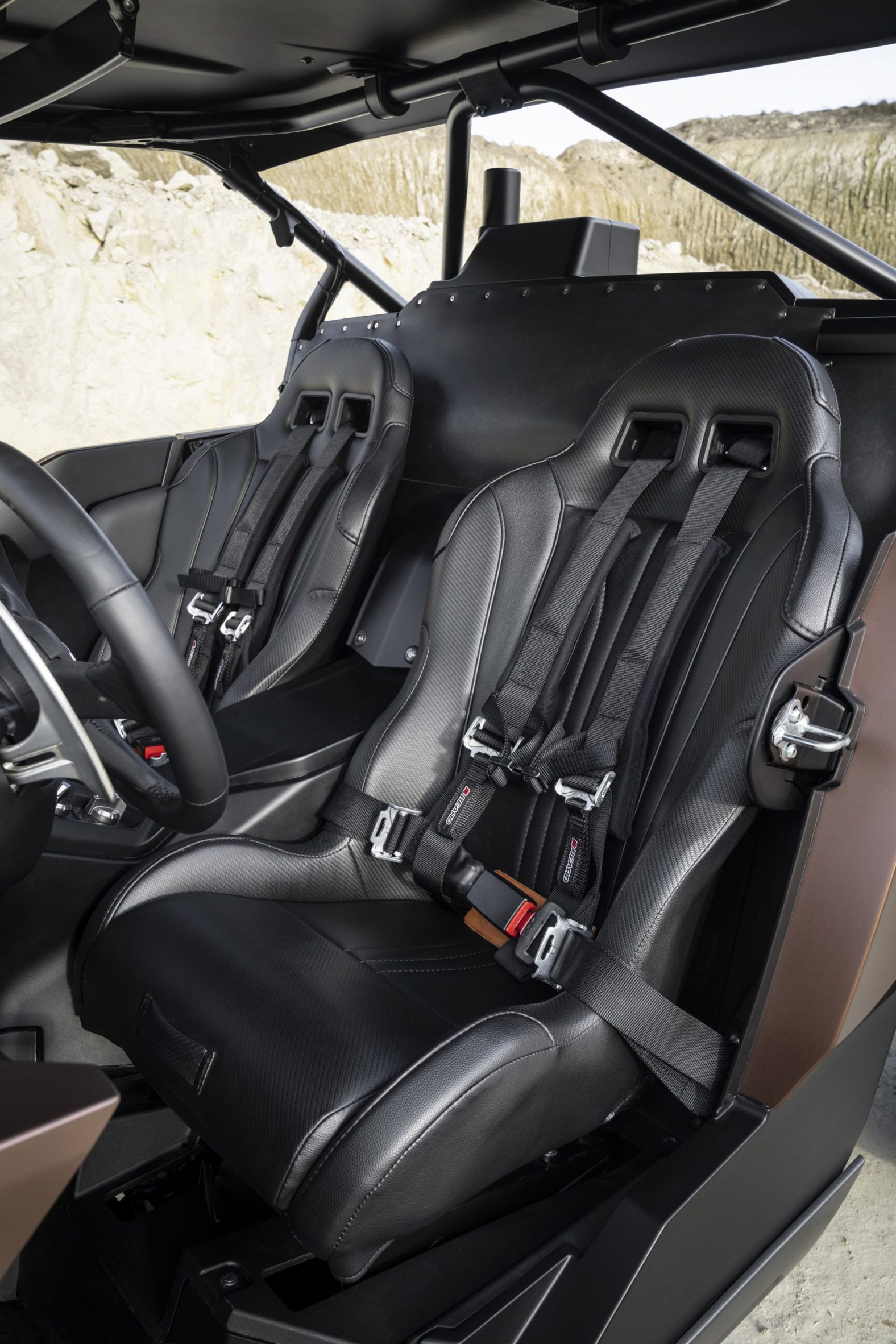
"If I compare the amount of electricity required to power a battery car or a hydrogen car, you need three times more electricity to make the car move on hydrogen," Cambridge University engineering professor Julian Allwood said during RIBA's recent climate conference.
"That would be fine if we had an excess supply of non-emitting electricity to make this hydrogen. But we don't, we're short on it."
As a result, most experts suggest using hydrogen to decarbonise only those industries that cannot be easily electrified.
This includes long-haul freight and aviation, with Airbus and Hybrid Air Vehicles among a number of companies that have developed concepts for hydrogen-powered aircrafts.

A number of car manufacturers recently signed a multilateral deal proposed at COP26 last month to transition to 100 per cent zero-emission cars and vans. However, out of the world's five biggest car manufacturers – Lexus-owner Toyota, Volkswagen, Daimler, Ford and Honda – Ford was the only one to sign.
In an interview with Dezeen, BMW's head of sustainability strategy Thomas Becker cited the lack of EV charging infrastructure in less developed countries as a reason for the hold-out on transitioning to electric vehicles, arguing that poorer countries should first "do their job properly".
The post Lexus unveils hydrogen-powered concept vehicle for off-road driving appeared first on Dezeen.
from Dezeen https://ift.tt/31E9jPP
No comments:
Post a Comment